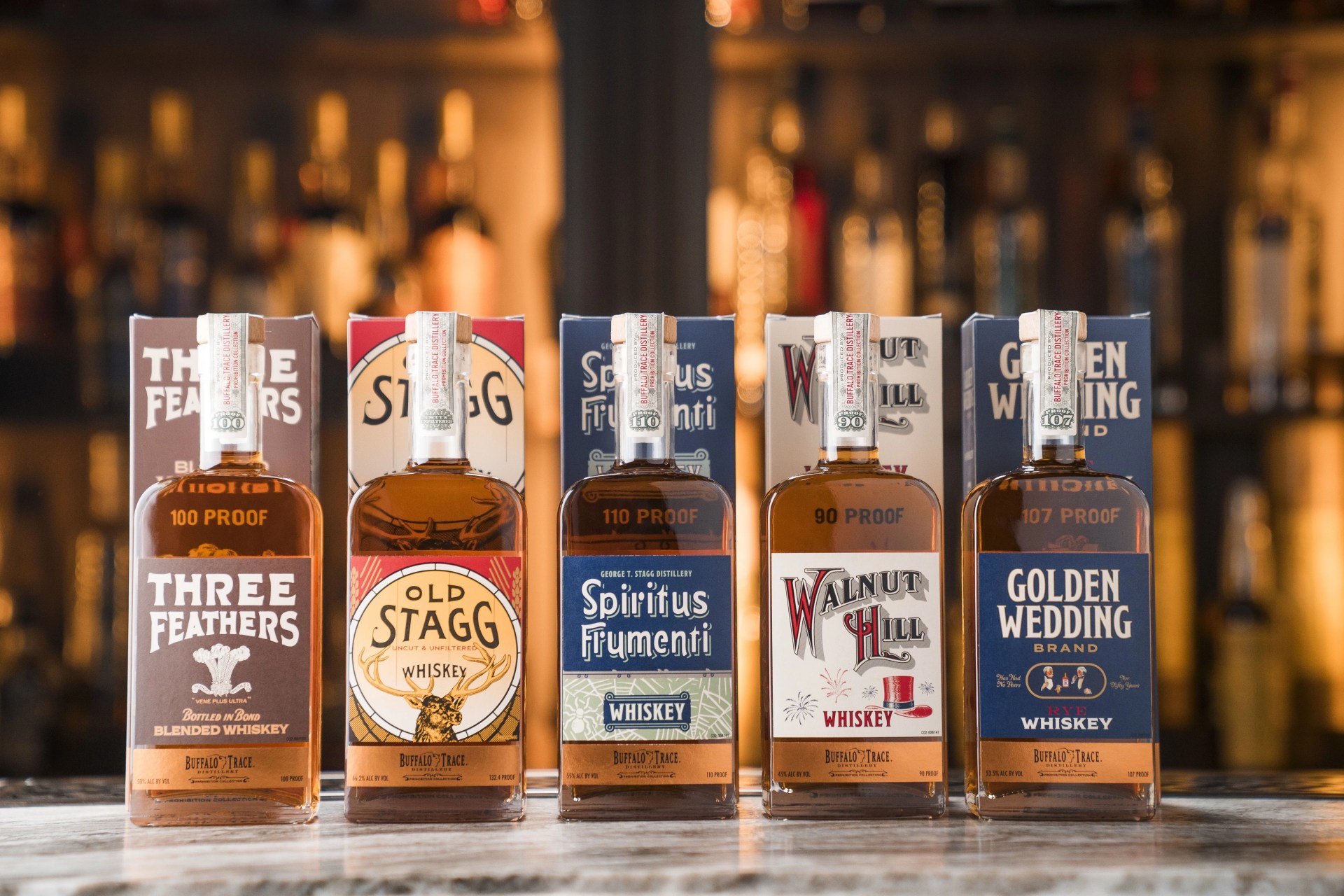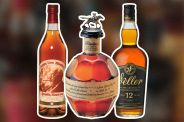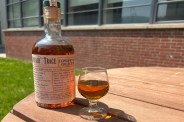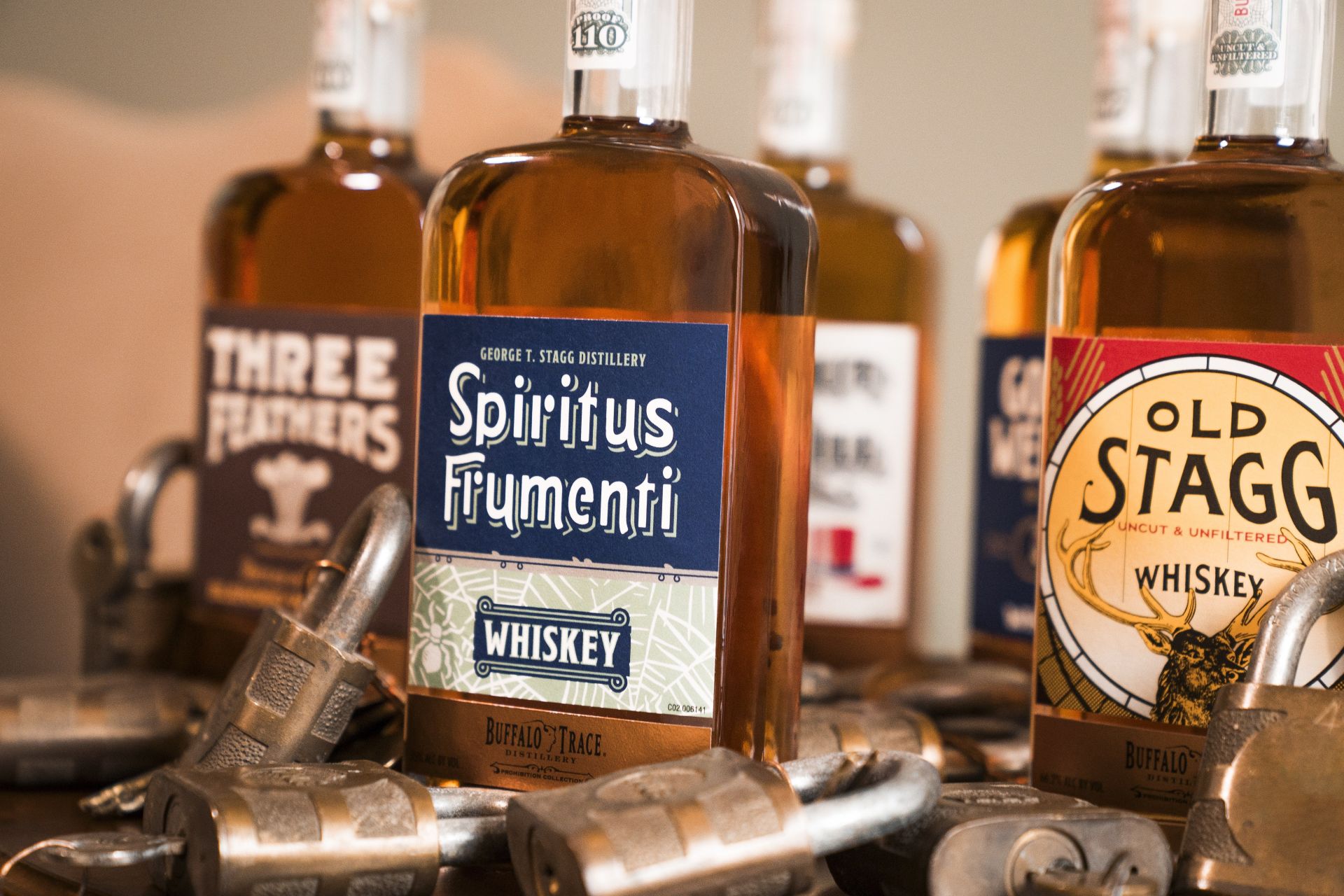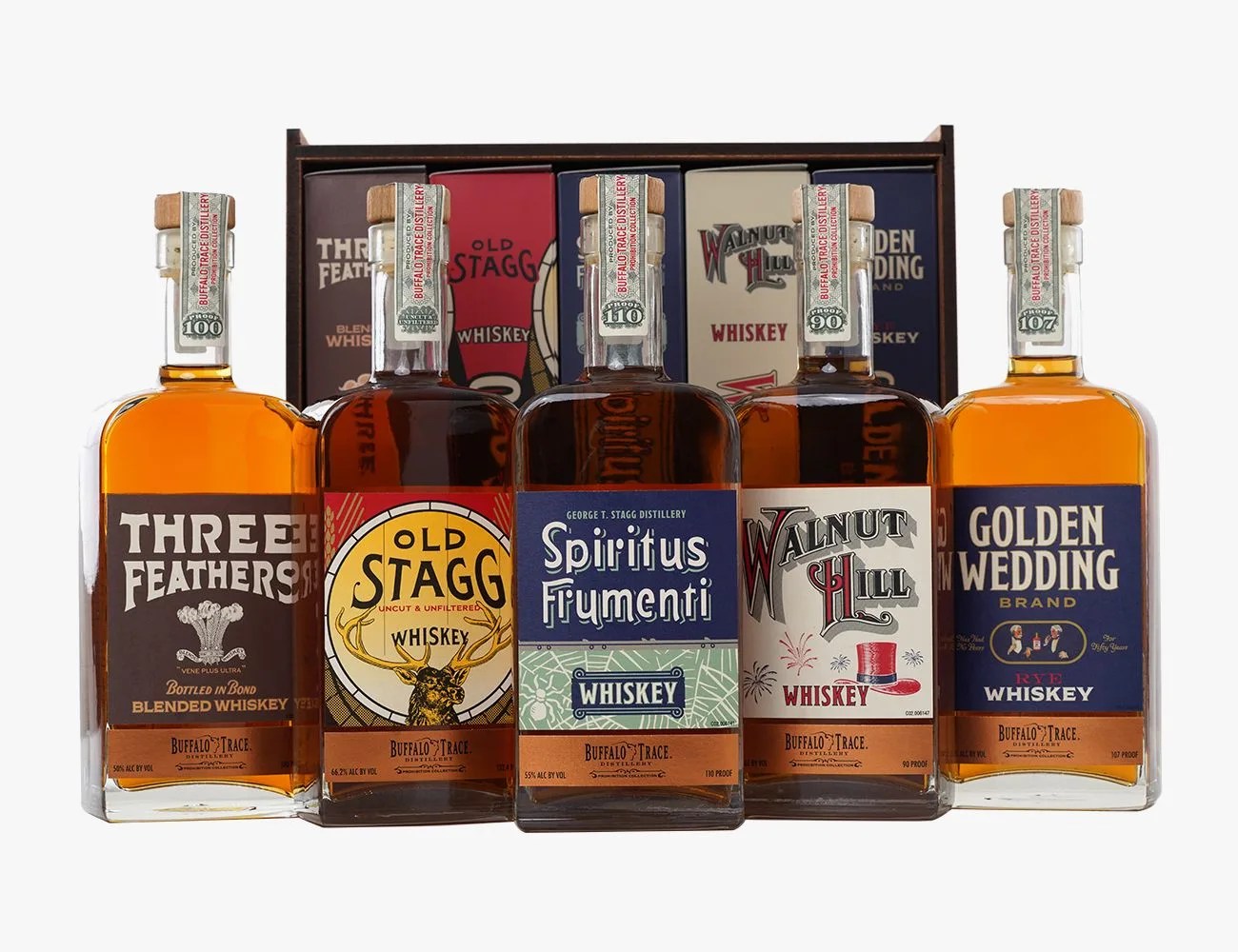Want to know what the Prohibition Collection tastes like? Read our tasting notes, here.
It’s impossible to talk about bourbon today without discussing Buffalo Trace Distillery. The brand’s wide portfolio not only includes its ubiquitous flagship bottle, but also such lauded labels as Weller, E.H. Taylor, Jr., Eagle Rare, Blanton’s, George T. Stagg, Pappy Van Winkle and more.
Buffalo Trace’s importance in the American whiskey scene is hardly a new development. The brand’s main distillery in Frankfort, KY was built in 1805 and is a National Historic Landmark. Even 100 years ago during Prohibition, the distillery — in those days known as George T. Stagg Distillery — was such a prominent establishment that it was one of just six distilleries granted a license to distill “medicinal whiskey.” Today, Buffalo Trace is honoring that tradition with the Prohibition Collection, consisting of five new bottles resurrecting long-lost whiskeys made at the distillery during that time.
As a result of the Eighteenth Amendment to the US Constitution, Prohibition was in effect in the United States from 1920 – 1933 and outlawed the production, importation and sale of alcohol until the law was repealed with the ratification of the Twenty-First Amendment. But not all alcohol was illegal during prohibition, as exceptions were made for liquor that was prescribed by a doctor. There were many brands of medicinal whiskey created during this time, and most of them disappeared in the years following Prohibition. But they were crucial in keeping licensed distilleries like George T. Stagg in business during those dark days.
The Buffalo Trace Prohibition Collection
The collection includes the following five bottles, with all but one being a recreation of a now-defunct brand distilled as a medicinal whiskey a century ago.
